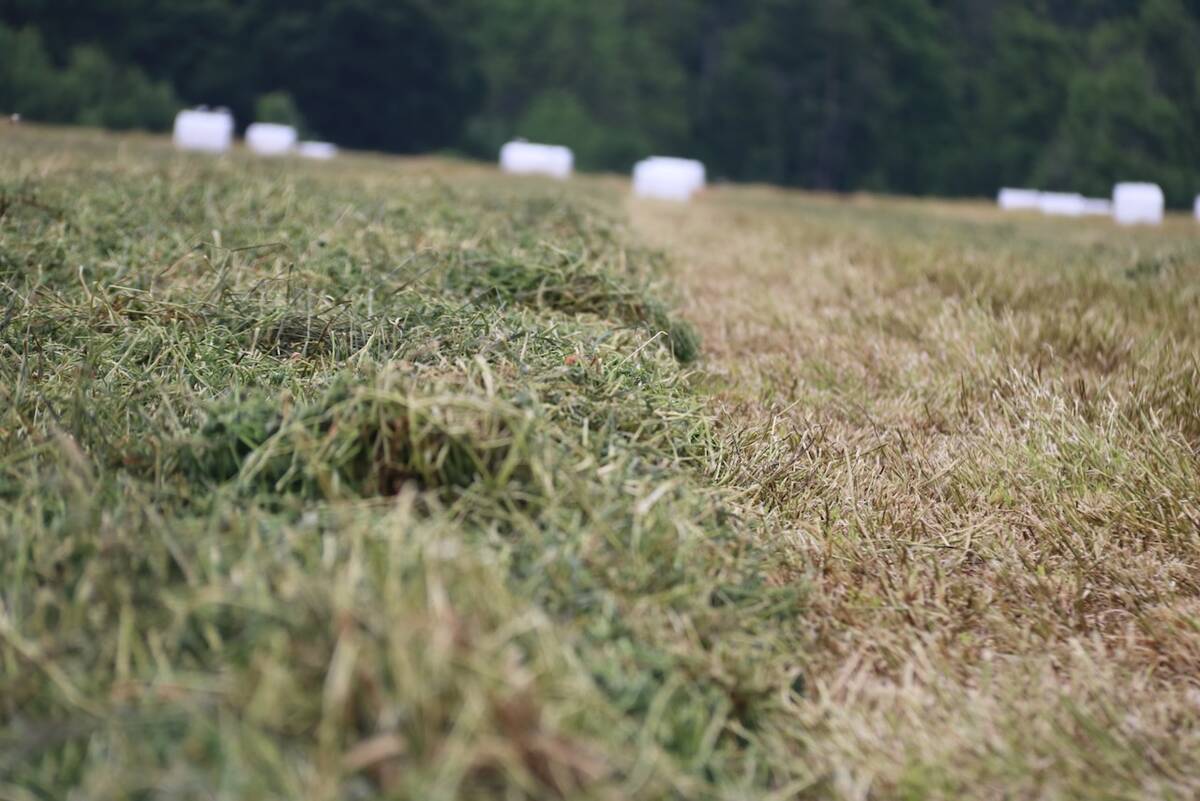Triticale, a human-made hybrid of wheat and rye, has never enjoyed the popularity of either of its parent crops in Canada. However, researchers have found that triticale varieties offer so many benefits to western Canadian farmers that it may soon be included in their ranks. And if it doesn’t, it should.
Traditionally, farmers have avoided growing triticale for a variety of reasons, chief among them the difficulty of marketing, according to Agriculture and Agri-Food Canada (AAFC) researcher Francois Eudes, a specialist in cereal biotechnology at Lethbridge, Alta. “Definitely the lack of clearly defined markets and big markets is an issue,” he says. “If you were to see a large demand for this particular grain, with clear and easily communicated messages of end-uses, that would trigger a response from farmers.”
Read Also

New high-performance forage training program to launch in 2026
A new Canadian Forage and Grasslands Asssociation high-performance forage program will be a resource for farmers, agronomists and others in the forage sector.
Currently, the markets available to growers are limited: triticale can be used for feed grain, silage, and ethanol or other bio-industrial uses, with some limited potential for development for use in food products. In general, it takes creativity and effort to find sure markets for triticale, and growers are more likely to choose cereals with established markets.
Another reason for farmers’ hesitation to incorporate triticale into their rotations is insurance, says Brian Beres, a biologist and specialist in life cycles of triticale with AAFC. “You can’t insure triticale at the same rate as soft white spring wheat,” he says. “If you can’t [insure it at the same rate], it’s an easy decision not to adopt it, so triticale is really handcuffed.”
But from an agronomic standpoint, triticale is superior to many other grains, such as wheat and barley.
High yield potential
According to Beres, when compared to a general purpose or feed wheat or barley, triticale shows superior yields. And when comparing spring triticale to winter triticale, winter triticale shows a similar yield improvement to that of winter wheat over spring wheat.
“Some of those spring types will yield like crazy, but generally speaking there is a yield advantage with the winter triticale because you’re splitting your workload. It also shows better weed competitiveness because the canopy closes off earlier in the spring,” says Beres. “If you’re in a livestock area, there’s even an opportunity for fall or spring grazing.”
Triticale also does well under stress, showing good yields when planted in marginal lands or bad soil, or even in drought conditions. “It’s well adapted to Nordic environments,” says Eudes. “With a rye parent, it’s very rustic, so it does extremely well in our rather cold environments.”
The benefits of triticale don’t stop there. Beres says that the current trend toward tight canola rotations or wheat-on-wheat in Western Canada is creating pathogen buildup. What triticale brings to the picture is diversity, along with some impressive disease-resistance. Most triticale varieties are resistant to stripe rust and fusarium head blight, and new varieties show improved resistance to ergot. This means farmers incorporating triticale into their rotations can rotate or even lighten their herbicide usage.
But the greatest benefit of growing triticale is all in the numbers. Beres has done studies on the stability of soft white wheat versus triticale across the prairies, assessing the stability of grain yield under different growing conditions. What he found was that in most cases triticale shows greater stability than other grains, including soft white spring wheat.
“Even based on the [premise] of a stable consistent supply of feedstock, triticale is, depending on the region, more attractive than soft white spring wheat,” says Beres. “That comes back to that old discussion of grain yield and how stable you can make that yield through zones across Canada. And triticale is up with the top.”
Beres’ data from the stability study shows that triticale could be highly competitive for bio-industrial uses due to its high grain and biomass yield and its stability. “In the case of triticale we have this compelling data set, and look what it shows in terms of stability! If you have good stability you have low risk,” he says.
New varieties
One reason triticale has sometimes been seen as a risky crop is its susceptibility to fusarium head blight and ergot.
However, two new spring triticale varieties show extensive improvements over older varieties such as AC Ultima and Prongorn. Scientists at AAFC research centres in Lethbridge, Alta., and Swift Current, Sask., have developed two new varieties with improved disease resistance, higher starch content and increased yield potential. These new varieties, Sunray and Brevis, are expected to be available for general production next spring.
According to Harpinder Randhawa, a wheat and triticale breeder with AAFC who worked on both varieties, Brevis, a medium-height semi-dwarf type, shows the highest yield of any triticale variety. In tests, he says, “It showed very good agronomic performance, maturity, yield and test weight, with a slight improvement in fusarium resistance. Brevis is very similar to the Pronghorn variety for fusarium resistance, and an improvement over other types. But the biggest improvement is in yield.”
Highlights of Sunray include good ergot resistance, early maturity and high yields. “Sunray is good agronomically, and better than AC Ultima, but slightly earlier maturing,” says Randhawa. “And it shows quite a bit of improvement in ergot tolerance.”
Ergot had been an area of concern for triticale, says Eudes, as it has for rye, but major progress has been made in varieties like Sunray. Today, when he visits fields he sees more ergot in durum wheat than in triticale.
Eudes says both Sunray and Brevis have very interesting attributes. “They have higher yield than anything in commercial production,” he says. “These two have up to 10 per cent more yield than commercial varieties in some particular regions.”
While farmers may still hesitate to incorporate triticale into their rotations, its improved agronomic characteristics and strong potential for bio-industrial applications may open doors down the road. It’s an alternative worth considering. †















